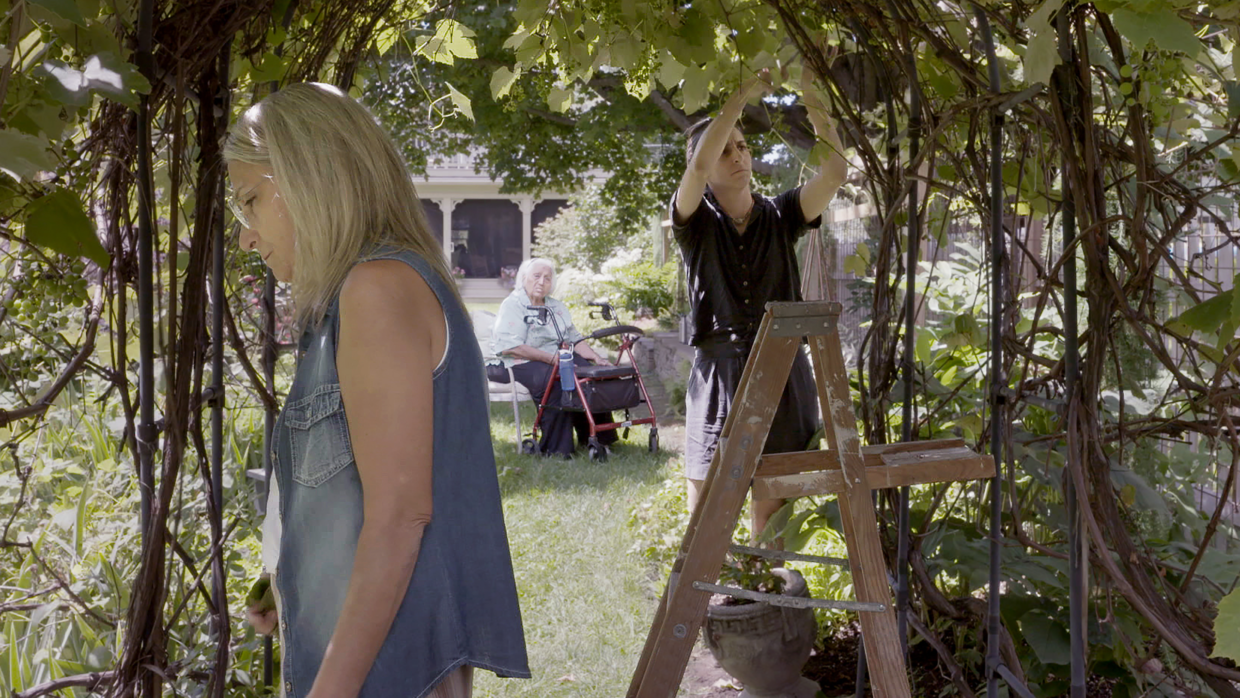 Back to selection
Back to selection
“The Freedom To Find My Own Way Through Such a Personal Story”: Director-DP-Editor Sierra Urich on Joonam
 Mitra Samimi-Urich, Behjat Samimi and Sierra Urich in Joonam
Mitra Samimi-Urich, Behjat Samimi and Sierra Urich in Joonam In her personal documentary film Joonam, director, editor and DP Sierra Urich attempts to make sense of her complicated identity as an Iranian-American. Growing up in Vermont, the culture and homeland of her mother and grandmother has never been truly known to her—only through stories, cuisine and holidays has she been able to connect with her Iranian heritage. Particularly with the current political climate of Iran, the prospect of visiting seems all the more impossible.
Urich briefly discusses shooting and editing her feature debut, touching on how instrumental supervising editor Maya Daisy Hawke was during the process.
See all responses to our annual Sundance editor interviews here.
See all responses to our annual Sundance cinematographer interviews here.
Filmmaker: How and why did you wind up being the editor of your film? What were the factors and attributes that led to your being hired for this job?
Urich: Everyone tells first-time filmmakers, especially ones that are making personal films, not to edit their own projects. However, I found that editing my own film allowed me to make deeper discoveries about myself and my family, which couldn’t have happened from the outside. The editing process (even in its drudgery) allowed me to visually think out loud and make new connections about my identity, which I was later able to fold into the work itself. I think it is very important in a personal film for the editing to also come from a personal place.
Filmmaker: How did you achieve these goals? What types of editing techniques, or processes, or feedback screenings allowed this work to occur?
Urich: An indispensable part of the editing process was my collaboration with supervising editor Maya Daisy Hawke. We would often joke that her role was “edit coach.” I would go off to edit for a few months at a time, and I’d make a handful of discoveries and usually a huge mess. Then the two of us would get together and watch what I’d made. Then we’d talk about it at length, watch more footage if need be, and then cut some new scenes based on what we talked about. After that I’d go off again, make an even bigger mess and hopefully several more discoveries, and we’d get back together and do it all again. Rinse and repeat. Maya is a masterful editor and artist, and having someone like her to provide gentle course corrections when I needed, affirmation when I was unsure, or just to talk through ideas with, allowed me the freedom to find my own way through such a personal story without the danger of getting too lost along the way.
Filmmaker: What editing system did you use, and why?
Urich: Adobe Premiere Pro. I was already familiar with the editing software.
Filmmaker: How and why did you wind up being the cinematographer of your film? What were the factors and attributes that led to your being hired for this job?
Urich: Because I was making a personal film, it was important to maintain a level of intimacy with my family and for that reason I chose to shoot the film myself.
Filmmaker: What camera did you shoot on? Why did you choose the camera that you did? What lenses did you use?
Urich: I shot on a Sony FS7 and I used two prime Sigma lenses—a 35mm and a 20mm. I chose to use prime lenses because they were fast and cheap, and coming from a still photography background, I liked the visual constraints they provided. The Sony FS7 was an utter stab in the dark—it seemed like that’s what everyone else was using and I just went with it!
Filmmaker: Describe your approach to lighting.
Urich: I used all natural light.
TECH BOX
Film Title: Joonam
Camera: Sony FS7
Lenses: Sigma 35mm f/1.4 Art Lens, Sigma 20mm f/1.4 Art Lens
Lighting: The sun, baby ;)
Processing: N/A
Color Grading: Resolve
